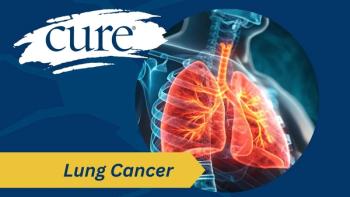
Living With Cancer in a Selfie-Centered World
Living in a selfie-centered world can be challenging, especially for those touched by breast cancer.
In the 1900s, with the introduction of the Kodak Brownie camera, self-portraiture became popular. About 70 years later, when Polaroid instant cameras came on the scene, the process of capturing a self-image became even faster. In 2003, Sony introduced the first mobile phone with a front-facing camera. Cell phone photography moved the process of capturing images from minutes to seconds and the term “selfie” would become part of the contemporary English language only a couple of years later.
In today’s world, everyone from the President of the United States to monkeys in Indonesia have enjoyed taking selfies. Several things are clearly evident from the popularity of selfie portraits — people enjoy seeing photos of themselves, they enjoy being seen and they enjoy social affirmation these photos provide.
The appeal of selfies comes from an ability to create and share easily. Within seconds, a self-portrait can be snapped and posted online. Selfies not only give the power of the photograph to the subject, but also allow the person shooting the image to control exactly how he/she is perceived by others. An image can be instantly deleted and retaken. Selfies today are commonplace and are constantly being uploaded to social media platforms such as Facebook, Snapchat, etc.
But are selfies for everyone? And when is a selfie taken too far? All creative license lies in the hands of the person taking the selfie. And what about selfies that are of a graphic nature, such as those of breast cancer patients as they progress through treatment? How does a person touched by breast cancer navigate this selfie-centered world?
As I began my breast cancer journey, I wanted to make sure my friends and family were constantly updated. Since I lived a good distance from them, I often went to appointments and procedures alone. This meant the only way I could update them quickly was to take a selfie. The first selfie I took was in my hospital cap and gown as I was about to be wheeled down the hall for surgery. As each phase of my breast cancer journey came and went, I found myself taking more and more photographs. My family enjoyed following along and felt they were right there with me. As I’d send candid selfies, they could laugh or cry with me.
Some selfies were difficult to take and maybe I overshared a little, like the time I took a selfie standing in front of the mirror with my blouse removed. I’d just taken off the bandages from surgery. The space where my breasts resided was empty. They’d been removed. The scars were red and raw. It was an ugly shot, but I wanted them to see and understand what I’d been through. And then there was the one I took when I was about to be placed underneath the linear accelerator for radiation. The huge machine loomed over me. No words were needed. They knew it was an emotionally trying time for me. They could feel my fear. But all the selfies weren’t as graphic. There were many selfies filled with happiness and joy. One example was when I was able to snap a shot of myself ringing the bell at the completion of my treatment. I was ecstatic! They could tell by the size of the smile on my face that this was a milestone worth celebrating.
Throughout my cancer experience, I continued to take selfies. I needed to document each step of my journey as much as they needed to be a part of it with me. As I shared my photos, I received feedback. Most of the feedback was encouraging and kind, but occasionally, if I shared something on a social media site, I would be met with negativity. Those people were people who did not understand the meaning of the word empathy. They had no grasp on the intensity or difficulty of a breast cancer trial, and I didn’t feel the need to explain it to them either.
In today’s world, it’s so easy to become self-centered. It seems everyone is ME focused. A debilitating disease can add fuel to that fire and rightly so. When a person is in the middle of a personal health crisis, their one and only concern may be how to get through it. They don’t have the strength or the energy to focus on anything else.
Living in a selfie-centered world is hard, but learning to use selfies in the right way can be beneficial. Sharing selfies with family and friends can provide a quick and easy way for them to keep up with your progress or become aware of any setbacks.
A few things to keep in mind when shooting breast cancer selfies:
- Think before you shoot. Do you really want to capture that moment and share it with others? Some moments should be kept private.
- Lighting is important. Be sure you have enough light to illuminate your face.
- Consider the background. If your background is too busy, your viewers won’t know where to focus their attention.
- What’s the subject of your shot? The subject of your selfie should always be YOU!
- Be considerate. Some people may not appreciate graphic photos like the one I shot without my shirt on. Don’t take selfies you’ll regret later.
- Share the good days. When you’re feeling great and you’re having a good day, shoot away! People want to see you happy.
- Limit the bad days. When you’re not feeling well or you’re having a very emotional day, it’s best to limit selfies. Your intent is not to cause others to feel sorry for you or be depressed by your photos.
- Document your journey. Selfies can provide a quick and easy way to capture all aspects of your breast cancer journey. You decide which moments to keep and which to discard.
- Don’t feel pressured. Selfies are supposed to be for your enjoyment and at your discretion. Don’t feel like you have an obligation to take photos for social media sites.
Living in a selfie-centered world can be hectic, challenging and fun all at the same time. Photography is all about capturing precious moments in time. If you remember some of these important tips, your selfies will show the world exactly who you are and what you want them to see.




